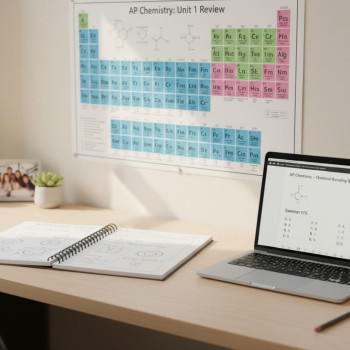Why This Guide — and Why Seattle?
If you’re a high school student (or a parent guiding one) eyeing computer science and engineering in Seattle — especially programs like CSE that have direct admit pathways — you’re standing at an exciting crossroad. Seattle offers a vibrant tech ecosystem, world-class universities, and an admissions landscape where Advanced Placement (AP) choices and exam performance can meaningfully influence your options. This post walks you through the what, why, and how: how AP classes and exams can align with direct-admit strategies, how to build a confident study plan, and where personalized help (like Sparkl’s 1-on-1 tutoring, tailored study plans, and AI-driven insights) fits into the picture.
Start With the Big Picture: AP, Direct Admit, and What Admissions Offices Notice
First, let’s get clarity on terminology. AP courses and exams are a way to demonstrate readiness for college-level coursework. Direct admission or direct admit programs let students apply (or be considered) for admission into a specific major — often one that’s competitive, like Computer Science & Engineering (CSE). For students targeting direct-admit CSE options, two things matter most:
- Academic Rigor — the transcript itself (do you take challenging courses like AP Calculus, AP Computer Science, AP Physics?)
- AP Performance — AP exam scores can showcase mastery, potentially earn credit, or allow placement into advanced college courses
Admissions officers aren’t just looking for test scores; they’re looking for a coherent preparation story. Which AP courses you chose, how you performed, and whether you took increasingly challenging math and science classes all send a message. Think of your course list and exam results as a narrative: “I built the necessary foundations for CSE, and I proved that foundation on rigorous assessments.”
Direct Admit in Context
Direct-admit programs can simplify the path to a specific major: accepted students enter the major immediately, rather than applying internally after a year or more. That early certainty is attractive — but it’s also competitive. For CSE, direct applicants should aim to show strong quantitative preparation (calculus, discrete math when available), programming experience, and academic consistency.

Which APs Matter Most for a CSE Direct Admit Path?
Not every AP course is created equal for computer science and engineering tracks. Here’s a prioritized list based on academic relevance and admissions signal strength.
- AP Calculus AB/BC — Almost always top-tier: shows calculus readiness, a cornerstone for engineering and CS.
- AP Computer Science A — Demonstrates coding fundamentals and problem-solving in Java (or equivalent).
- AP Physics (Mechanics and/or Electricity & Magnetism) — Useful for understanding foundations of engineering and computational modeling.
- AP Statistics — Increasingly valuable given the importance of data-driven work in computing.
- AP Chemistry — Helpful if you’re leaning toward hardware, materials, or interdisciplinary fields.
- AP English or History — Admissions love well-roundedness; strong writing and communication matter.
Choosing the right APs is both strategic (which ones align with your major) and realistic (which ones you can prepare for well). Quality beats quantity: it’s better to earn a 4 or 5 in the most relevant APs than to pile on exams and earn lower scores.
How AP Scores Translate to College Credit and Placement
AP scores are used in two main ways by colleges: credit and placement. Credit can reduce the number of required classes for graduation and sometimes shorten time to degree. Placement allows you to skip introductory courses and jump into higher-level classes — a huge advantage in competitive majors.
| AP Score | Typical Outcome | Examples For CSE Students |
|---|---|---|
| 5 | High chance of credit + advanced placement | AP Calculus BC → credit for Calc I & II; AP CS A → placement into second-semester programming |
| 4 | Often earns placement or partial credit | AP Calculus AB → credit for Calc I; AP Physics → placement into intermediate physics |
| 3 | Varies widely — some schools grant credit, some do not | May earn elective credit or placement depending on school policy |
| 1–2 | Usually no credit or placement | Score suggests gaps — consider retaking after review |
Important: policies differ by college. Some institutions accept AP scores for direct admission or to help validate readiness; others use them primarily for placement. Always check each school’s credit policy, but keep in mind a strong AP record strengthens your academic profile regardless of how credits are awarded.
Planning Your Four-Year High School Roadmap
High-school course planning is strategic: it balances building depth in math and computer science with demonstrating breadth and sustained performance. Here’s a sample roadmap for students aiming at CSE direct-admit paths.
Freshman Year
- Focus: Foundations. Take Algebra II (or higher if ready) and explore introductory programming if available.
- Extracurriculars: Join coding clubs, robotics, or math team.
Sophomore Year
- Focus: Accelerate. Move into Precalculus/Calculus AB if possible. Take an introductory AP if your school offers AP Computer Science Principles or another AP aligned with your interests.
- Work on: small coding projects, GitHub portfolio, summer programs or internships (local tech companies or university outreach).
Junior Year
- Focus: Breadth and Rigor. Take AP Calculus AB/BC and AP Computer Science A. Consider AP Physics if you’re leaning toward engineering.
- Testing: This is often your heaviest year for AP exams and the year your GPA carries major weight; plan study time carefully.
Senior Year
- Focus: Strengthen and Showcase. Take any remaining APs that add value (AP Statistics, AP Physics). Use senior projects, capstones, or independent coding work to show depth.
- Applications: Submit clear narratives about your preparation and what you want to study in CSE-like majors.
Study Strategies That Actually Work for AP Exams and Major Readiness
AP Exams test understanding, not just memorization. For STEM APs, problem-solving practice is king. Here are targeted strategies that students find effective:
- Backward Plan from Test Date: Break down topics into weekly targets; prioritize high-yield units and exam-style practice in the final 6–8 weeks.
- Active Practice: For AP Calculus and Physics, do past free-response questions under timed conditions. For AP CS A, build small programs that apply core concepts.
- Concept Maps: Visually map relationships between topics (e.g., integrals and area under curves; for CS, data structures and appropriate algorithm choices).
- Mixed Practice: Alternate between multiple-choice sections and free-response practice. Real exams require mental flexibility.
- Peer Study + Teaching: Explain concepts to classmates or family. Teaching is one of the fastest ways to deepen understanding.
Use Real Exam Materials
Practice with released AP questions and full-length sections where possible. These resources mirror wording, format, and rigor. Simulating the pressure of an exam environment helps your time management and reduces test-day anxiety.
How to Balance AP Load Without Burning Out
There’s no virtue in taking every AP available if it means cramming and lower performance across the board. Here’s a simple decision rubric:
- Does this AP align with my intended major or meaningfully strengthen my narrative? (Yes → higher priority.)
- Can I realistically earn a 4 or 5 with the time I have? (If not, revisit coursework or schedule.)
- Do I have support (teacher help, tutoring, peer groups)? Many competitive programs expect rigorous coursework, but they also value consistent, strong performance.
Quality over quantity. A focused set of APs with strong scores communicates readiness much more clearly than a laundry list of mediocre results.

Putting It Together: The Admissions Narrative
Admissions officers read tens of thousands of applications. What stands out is coherence. Connect your AP choices, projects, and extracurriculars into a single narrative about curiosity and preparation:
- Show progression: early algebra → AP Calculus → AP CS → independent projects
- Show application: not just coursework, but how you used those concepts (internship, app, research)
- Be reflective: in essays and interviews, explain why CSE excites you — what problem you want to work on
This narrative helps admissions committees understand not just your past performance, but your potential trajectory in CSE.
Practical Checklist for Direct Admit Applicants
Here’s a checklist you can use the summer before applications open and again before submission:
- Confirm the direct-admit program’s application components and deadlines (some programs have specific time windows or opt-in requirements).
- Compile AP scores and request official score sends early enough to meet college deadlines.
- Gather evidence of sustained math and programming experience (course transcripts, projects, extracurriculars).
- Write an application essay that connects your academic choices to real problems or projects you’ve worked on.
- Plan interviews (if required) and prepare to explain technical projects clearly to non-specialists.
How Personalized Tutoring (Like Sparkl) Helps — When and Why to Consider It
Many students do great on their own, but others benefit from guided, efficient support. Personalized tutoring services bring three advantages that matter for APs and direct-admit pathways:
- 1-on-1 Guidance: Tutors can diagnose specific gaps (e.g., limits in calculus, weak data structures) and build a remediation plan.
- Tailored Study Plans: Rather than a one-size-fits-all schedule, customized plans translate big exam syllabi into weekly, actionable tasks.
- Expert Review + Feedback: For coding projects, free-response answers, and timed practice, immediate expert feedback accelerates improvement.
Sparkl’s model — with expert tutors, tailored study plans, and AI-driven insights to track progress — is especially helpful for students balancing rigorous AP loads and targeted direct-admit ambitions. The right tutor doesn’t just teach content; they help you show your best self on the transcript and in your applications.
Example Study Plan: AP Calculus BC + AP CS A (12-Week Ramp)
This plan focuses on steady, tested improvement. Adjust timing depending on when you have the exam.
| Weeks | Focus | Weekly Targets |
|---|---|---|
| 1–4 | Foundations | Review key calculus concepts; build basic Java programs; complete 3 free-response practice problems weekly |
| 5–8 | Application | Timed practice sections; deepen problem sets; finish at least 2 full-length past AP CS free-response tasks |
| 9–11 | Exam Simulation | Take 2 full-length practice exams; analyze mistakes; focus on weak units |
| 12 | Polish | Light review, targeted drill, rest, and confidence-building |
Real-World Context: Seattle’s Tech Scene and What That Means for You
Seattle is home to major tech employers, a dynamic startup ecosystem, and research-driven universities. That environment creates opportunities — internships, hackathons, research partnerships — that strengthen both your application and your post-college prospects. Admissions officers appreciate candidates who show real engagement with the ecosystem: internships, mentorships, or community projects that connect coding to impact.
If you’re local to Seattle, seek out university outreach programs, local hackathons, and internships at nearby tech companies. If you’re farther away, remote internships, open-source contributions, and virtual research projects can all provide similar evidence of initiative.
What If You Don’t Get Direct Admit?
Rejection isn’t the end of the road. Many students enter CSE-like majors after their first year through internal transfer pathways or by pursuing related majors and switching later. If direct admit is the goal but doesn’t happen this cycle, use freshman year to take advantage of placement from AP scores, excel in foundational classes, and connect with faculty for research and mentorship. Your record in those first-year courses can be a powerful springboard.
Common Mistakes and How to Avoid Them
- Overloading on APs: Taking too many APs without mastering them can hurt GPA and signal poor strategic planning.
- Neglecting Projects: For CSE, real coding projects, Hackathon participation, and collaborative builds speak loudly. Don’t rely only on scores.
- Waiting to Send Scores: Score sends can take time during busy windows — plan ahead so colleges receive them by required deadlines.
- Skipping Timed Practice: AP exams require pacing. Practicing without timing underestimates test-day pressure.
Final Thoughts: Build Momentum, Not Just Credentials
Direct-admit CSE tracks in Seattle are competitive, but they’re accessible when you combine smart course selection, disciplined preparation, and meaningful experiences. Think of your high school years as a laboratory for testing ideas: take AP classes that genuinely interest you, build projects that show curiosity and problem-solving, and use each exam and assignment as an opportunity to get better.
When you need efficient acceleration — whether a focused review for AP exams or tailored help polishing a coding project — tools like Sparkl that offer 1-on-1 guidance, customized study plans, and actionable insights can help you turn effort into outcome faster. The right tutor is a coach, editor, accountability partner, and technical sounding board all in one.
Quick Action Checklist (What to Do This Week)
- List your target programs and check their direct-admit criteria.
- Identify 3 AP exams you’ll commit to and draft a 12-week study calendar.
- Plan one small coding project (weekend hack or school project) to add to your portfolio.
- Consider a trial session with a tutor to diagnose gaps and create a short-term plan.
Parting Encouragement
Admissions is a marathon, not a sprint. The combination of AP coursework, strategic project work, and intentional preparation will pay off whether you secure direct admit the first time or take a slightly different path. Keep curiosity at the center: the strongest applicants are those who learn because they love solving problems — not merely to check boxes. With smart choices, steady work, and the right support, you’ll be well-positioned for success in Seattle’s CSE opportunities and beyond.
Ready to make a plan? Start small, schedule one week of focused study, and iterate from there. Your future in CSE is a step-by-step build — and every thoughtful step counts.



















No Comments
Leave a comment Cancel